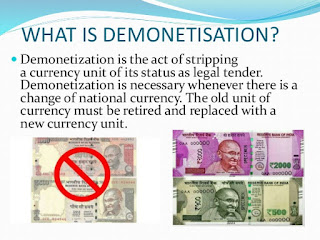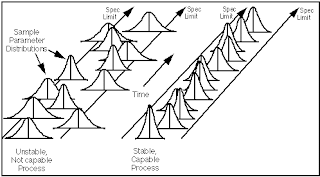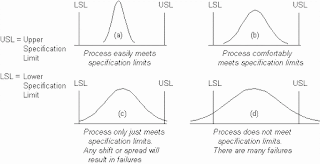A train of thoughts and writings on development, technology and the economy focusing on the socio-techno-economic-cultural surge of developing economies to regain and partake in leadership of the world. Written by George Easaw, member of the faculty of Business Administration of Allliance University, Bangalore, India. (This is purely an academic site, no commercial use is allowed. Photography rights lie with the respective organisations). Mention credits as needed.
Wednesday, November 29, 2017
Thursday, November 16, 2017
Was Reliance Jio introduction a BPR exercise in India ?
Business Process Reengineering is defined as the fundamental rethinking and radical redesign of business processes to achieve dramatic improvements in critical measures of performance such as cost, quality, service and speed.(Hammer and Champy, 1993)

Disruptive innovation is a term in the field of business administration which refers to an innovation that creates a new market and value network and eventually disrupts an existing market and value network, displacing established market leading firms, products, and alliances. - www.wikipedia.org
Prof. Christensen of Harvard Business School has this to say about Jio introduction ..
Here are a few points being listed to support the argument that Reliance Jio qualifies to be termed as a very successful re-engineering exercise.
Having invested heavily in infrastructure there was no option to Reliance Jio but to give superior service to the customers and capture the market. The customers knew this and embraced Reliance Jio with open hands.
6. Introduction of Low cost tariff plans : After the almost 9 months free usage period to woo customers, the release of new tariff plans to suit the rural customers pockets, even going down to about Rs 149 for a 30 day talk plan with minimal data, was very reassuring to the telecom subscribers of the country.
7. End to exploitation of customers : The constant thoughts within the customers/ minds on how all the telecom companies in the past were exploiting the customers with high and exhorbitant charges and poor service was at the back of the minds of the customers and they wanted to get released from this setback for ever.
8. Discounting future customer exploitation : Some of the customers did have the feeling and fears that Reliance Jio would give low charge plans initially to garner more subscribers and then increase the charges later on, thus virtually imprisoning customers to its networks were totally belied when Reliance Jio released its final tariff plans a month back, which were very reasonable.
9. Providing great customer value : Reliance Jio never took up any negative advertising but instead only concentrated on providing great value to its customers. Customers across the country appreciated this Jio tactic very much with more Jio sims on their phones and porting existing numbers from other telecom service providers to Reliance Jio network.
10. Rewriting global telecom market cost parameters : Reliance Jio rewrote the market for voice calling in the world by making it totally free within the country and to be the first country in the world to offer such an offering.
11. Increased customer confidence : Overall customers were assured of the best technology, best customer service, affordable costs, FREE calling and low cost huge data usage of upto 1GB daily (and low speed thenceforth for the next few hours of the day till 2AM when plans rolled back to the initial stage), all added to the customers confidence in the company and its offering to the Indian public.
Having invested almost $33 billion in the most advanced Indian telecom network in India (not challenged yet by any telecom company in the any other part of the world, even in China or US), Reliance Jio has really set a one time total disruption of the telecom industry in India and the world.
Global telecom majors are now scared to invest in the country and the existing global players are looking for alliances and partnerships to stay afloat in India. The Indian customers do not need any more confidence building measures from Reliance Jio to assure them and are more than convinced that Reliance Jio is going to stay in the Indian market and will serve them well in the coming years.
Having invested almost $33 billion in the most advanced Indian telecom network in India (not challenged yet by any telecom company in the any other part of the world, even in China or US), Reliance Jio has really set a one time total disruption of the telecom industry in India and the world.
Global telecom majors are now scared to invest in the country and the existing global players are looking for alliances and partnerships to stay afloat in India. The Indian customers do not need any more confidence building measures from Reliance Jio to assure them and are more than convinced that Reliance Jio is going to stay in the Indian market and will serve them well in the coming years.
To ensure Reliance Jio does not have a total monopoly in the telecom and data transmission markets, these foreign companies are kept surviving by the Indian public with good revenues and customer base so as not to have them exit the country.
The minimum time and dexterity with which this one-time technological disruption and radical change delivering high value to the customer at the lowest cost has been brought about in the smoothest way and shortest time period, indeed leaves no doubt in the minds of the Indian public that Reliance Jio introduction and disruption of the telecom market in India is a perfect example of Business Process Re-engineering at its best ..
Lets see whether the next BPR exercise in the country would come from within or would be implemented by an MNC .. This technological and commercial disruption of the telecom industry has been the biggest in the history of Independent India and for that matter anywhere in the world, and that adds more importance and weight to this exercise !
George Easaw
Ref : 1. Hammer, Micheal and James Champy, Re-engineering the Corporation - A manifesto for Business Revolution, Collins Business Essentials, 1993.
Wednesday, November 08, 2017
Lessons from India's demonetisation for other countries of the world ..
I was reading the article by Prof Bhaskar Chakravarthi of Tufts Business School , Harvard Business Review, November 2017 on the lessons of India's demonetisation exercise for the rest of the countries of the world.
 The lessons as highlighted by Prof Bhaskar made interesting reading. The underflow of the paper was the intellectual hollowness of the whole process. The fact that a very important economic decision was taken by the Indian Prime Minister, relatively less experienced, who had manipulated the Indian population through his provocative election speeches, had literally misfired, did harm the economy in great measure.
The lessons as highlighted by Prof Bhaskar made interesting reading. The underflow of the paper was the intellectual hollowness of the whole process. The fact that a very important economic decision was taken by the Indian Prime Minister, relatively less experienced, who had manipulated the Indian population through his provocative election speeches, had literally misfired, did harm the economy in great measure.The damages to the economy were great and very disastrous. Loss of almost 2 million jobs and loss of economic output in the country of almost INR 4.5 lakh crores resulting in the drop of Indian GDP growth to 5.9% in the past four quarters (not forgetting additional expenses of almost INR 30,000 crores, $4.5 billion, for the demonetisation exercise) has been catastrophic and devastating to the economy.
 |
| The unintelligent acts of this person .. |
 |
| What a great loss of manpower standing in queues |
Hope the other nations of the world would learn from the Indian economic blunder carried out on November 8, 2017. If not for any benefits to the host country, let this exercise have some global lessons for the other countries of the world on avoiding economic blunders.
Did India really need demonetisation, was demonetisation implemented after thoughtful deliberations, has this step helped black money hoarders convert their black money to white with government support are all questions the nation and the world are waiting for an answer ..
george..
Monday, November 06, 2017
Comparing Amazon Echo and Google Home Personal Assistants
" Alexa, what is the news ? "
Let me introduce to my friends the two AI assisted (virtual) Personal Assistants in the market, Amazon Echo and Google Home.
Two days back, I got the AI powered Amazon Echo Dot, having the cloud based service through the Amazon Personal Assistant Alexa.
 |
| Amazon Echo dot, INR 3150, www.amazon.in |
https://beebom.com/best-alexa-commands-for-amazon-echo/
Amazon Echo Dot, has been in the market for more than 2 years and accesses the Amazon Web Services (AWS) through a wi-fi connection while the Google Home is the new entrant released just last year and has access to the vast Google knowledge repository and also great services like Youtube .. (which is a big shortcoming for Amazon) ..
Click here to know more about the best Alexa skills and commands..
For information gathering and retrieval tasks, Google Home is more powerful but for tasks like shopping, networking with other devices using IoT Amazon Echo has the upper edge.
A hot battle is on, whichever is better, will dominate the AI assisted personal chores segment in the coming days. The yet undefined roles of the Personal Assistant, as the field is still in the evolutionary stage, is also a clear indication of the tech future assisted by artificial intelligence, which is to come to our homes and distort, disturb or assist our personal online lives..
 |
| Google Home about INR 10,000 on ebay .. |
In the next few days and weeks, I will be able to explore the additional features of Amazon Echo like IoT by working on integrating more home devices like TV, lighting, Audio systems etc to the Amazon Echo. I find AI capabilities in Echo and Google Home limited, but in the growth phase.
 |
| Echo is simple to setup and use ... |
Cost wise, in Bangalore, Amazon Echo dot comes at INR 3150 while Google Home mini costs almost INR 8000.
 |
| Google Home mini, INR 8000 on ebay |
Here is a Techcrunch comparison of Alexa, Google Siri and Sonos ..
While Google and Tesla / Toyota / Ford are fighting it out on who will dominate the driverless electric car market, this fight between Amazon and Google is set to get more personal ..
George..
Subscribe to:
Posts (Atom)
Top Environmental Sustainability issues globally
Based on the information from sources across the world, here are the top 10 interesting issues in environmental sustainability that are pr...
My popular posts over the last month ..
-
These malayalam proverbs (invaluable diamonds of wisdom) have been collected from eyyal.blogspot.com and other sources on the Intern...
-
Information is processed data. How can you process this data if it is very large running to terabits and is being generated ...
-
Taj Hotel under attack .. Sandeep's mother touching her son one last time .. Sandeep's mother faints on seeing her son'...
-
Chipko movement heroines hugging trees, 26 March 1973, courtesy The Hindu It was in 1730 AD that Amrita Devi Bishnoi along with ...
-
These are photographs of North Kerala,(Malabar region ) taken by missionaries from Basel Mission around 1892 - 1930. The original title a...
-
Learning from history is the most gainful thing anyone can do ..!! From history we learn a lot of things and in turn, we become history to...
-
These are links to some of the writings/readings I have done on Lean related topics over the past many years. You may find them interesti...
-
Simple and brilliant illustration of lean thinking.. Frustration is a state of mind when one is unable to add value to the tasks he/she...
-
TM Varghese statue at Kesavadasapuram juntion in Trivandrum The epitaph .. Recently when I visited Trivandrum, Kerala, I got d...
-
When Dr Thomas Varghese trained at the Tata Memorial Cancer hospital in Mumbai and developer of the Varghese technique in cancer surgery, ...













